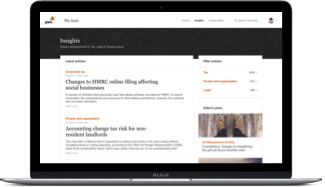The recently published First Tier Tribunal (FTT) Quinn London Ltd V HMRC case provides some much needed clarity on the application of the subsidised expenditure rules for Small & Medium Sized Enterprise (SME) R&D claims. The R&D tax legislation restricts the amount of relief available to SMEs for R&D that has already been funded by other means, such as a grant or subsidy.
In our experience, HMRC has taken a broad interpretation of these rules, trying to classify expenditure as “subsidised” (and thus not allowable) if R&D activities were part of a project to deliver goods or services that were being paid for by a client. We have long argued this is too broad an interpretation of the rules, which this case now confirms.
The FTT focused on the meaning of “met” as included in s1138(1)(c) CTA 2009 - “to the extent that it is otherwise met directly or indirectly by a person other than the company.” It found that there needed to be a clear link between the price paid by the client/customer and the expenditure on R&D to prevent a claim under the SME rules.
The FTT found that HMRC’s broad approach is too wide-ranging and as a result limits the circumstances for SME R&D relief to only those projects where the company has no prospect of exploiting the R&D for commercial gain.
While the case was fairly conclusive in terms of how the rules should be applied, the application of these rules will depend on the facts of each case. The Quinn projects were undertaken for the customer under standardised construction contracts with the economic risk on the R&D activity sitting with Quinn. Where contracts are more bespoke in nature, the application of the rules may be less clear cut.
